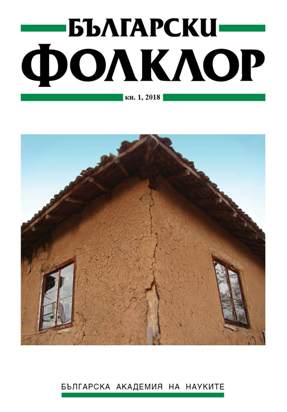
Юбилеят на Татяна В. Цивян и XIV Балканистични четения в Института по славянознание към Руската академия на науките
Anniversary; Scientific Life; Scholarly Conference
More...We kindly inform you that, as long as the subject affiliation of our 300.000+ articles is in progress, you might get unsufficient or no results on your third level or second level search. In this case, please broaden your search criteria.

Anniversary; Scientific Life; Scholarly Conference
More...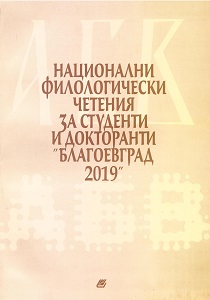
Migene - one of the most prominent representatives of the Albanian literature of the 1930s. He is one of those writers who aspire to a clear-cut vision. And this reflects on his work, in which over years there has been an obvious increase in critical elements. Migene's humanism is a major feature of his work, almost always combined with elements of criticality. In him, criticism is imposed as a style of writing. The writer uses it as a springboard for generalizations of satiric-philosophical character that usually appear at the end of the work
More...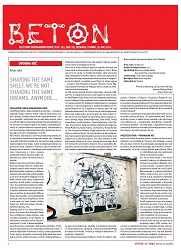
Arian Leka: UVODNA REČ; Ylljet Aliçka: Naporni pokušaji ulaska bezpozivnice na mondenski prijem; Lindita Arapi: Tirana bez prijatelja, S malog prozora moje kuće; Ardian-Christian Kyçyku: L.O.L; Sabina Veizaj: Polubol, Majke; Marikljena Ničo: Izvan krajolika, Ona mi govori o letenju
More...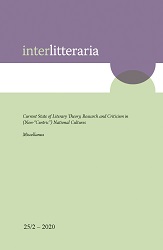
The aim of this article is to analyze the process of evaluation of Albanian literature in literary periodicals (print or online). The research aims to explain the nature of criticism of Albanian literature in accordance with three main periods of Albanian literary history (1920–1944; 1945–1990; 1991–present). The paper has a short chronological presentation of the main periodicals which deal with literature. It also deals with the reception of Albanian literature in old and new periodicals. Some of the most important research questions of this paper are: Is there a continuation in the critical approaches to Albanian literature from the beginning to the present? Do critics have a ‘critical’ interaction between them while they express their evaluation regarding literature? Who are the critics? Which is the core role of certain critics and periodicals? The methodology used in this paper embraces a historical, analytical, statistical and interpretative approach. The paper will be developed in two parallel sections. The first one will elaborate quantitatively official data related to the number of periodicals which deal with the evaluation of literature in its theoretical and critical aspects and the other section will describe, analyze and interpret the data. The research results tend to prove that the process of critical evaluation of Albanian literature has experienced similar characteristics with Albanian literature itself. The critical reflection or criticism has turned out to be a refracting process. The critical evaluations are marred occasionally by low levels of professionalism or political interference.
More...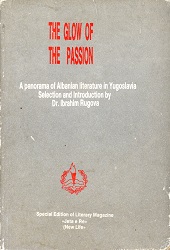
An anthology of Albanian poetry, prose and essays of four decades of post-WW II history, published in 1991 by »Jeta ë Re« (New Life), Prishtina
More...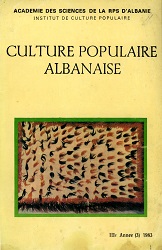
1. La conference nationale sur la formation du peuple albanais, de sa langue et de sa culture; 2. Acquisitions de la science albanaise; 3. Symposium sur l’epopee heroique legendaire; 4. Preparatifs pour le festival folklorique national; 5. Reunion commemorative sur le centenaire de la naissance du prof. Dr. Maximilien lambertz; 6. Preparation du corps des agglomerations et des habitations populaires albanaises; 7. Travaux du laboratoire chimique de l’ICP; 8. Activites des departements de l’institut de culture populaire; 9. Sessions scientifiques dans les districts.
More...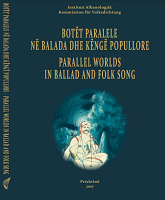
In our article we will explore the Besa’s role in establishing the relationship between two worlds: the Immanent and the Transcendent world of human beings. In the resurrection ballad ‘Lula e shtatë vllazënve’ (Flower of the seven brothers), the Besa appears as an indispensable ethical and anthropological instrument, a tool that creates harmony between body and soul. Within the community (tribe, family), it also sets the social order, while in a cosmic context, it creates the balance between the order of the human world and that of other world. The Besa in the Albanian ballad of resurrection is a moral category that derives not from the viewpoint of utilitarian ethics, but from the worldview of monistic-pantheistic ethics, which are strictly deterministic. Through the discipline of philosophical anthropology, we will discuss the Besa in the Albanian resurrection ballad in the context of the pantheist viewpoint and ethical views of Spinoza from his work “Ethics”. We will also ground our study on the philosophical concept of pantheism, as espoused by author Michael P. Levine.
More...
In this treatment are examined the parallels between Romania’s most famous ballad, “Miorita”, and a common Albanian ballad with versions from both south and north. Communication through sound saves the Albanian shepherd, while Romanian shepherd requires the sound of his flute to persist even after his death. Referring to the similarities and differences, as well as previous interpretations of the respective ballads, this paper aims to shed light on the parallel worlds of the shepherds and their communications and perception of the world. The Romanian ballad, “Miorita”, is about two shepherds who come down from the mountains and make plans to kill their friend and to take his flock of sheep. One of the sheep, Miorita, which has a human attribute (she can speak), tells the shepherd how his friends are acting against him. The Albanian folk ballad, “Tanë, moj e zeza, Tanë” (“Tana, oh poor Tana”), shows similarities with “Miorita” in several elements: Tana’s boyfriend, who is bound by thieves, seeks to free his hands and play his flute. Through the sounds he will reveal what happened. Also another similar song is “Kajka e çobaneshës” (“The Song of Shepherdess”), recorded in Karaçevë e Epërme, Kosovo. Characters in the two songs are similar, and the scene is similar. In the Albanian song the shepherd resists and uses any possible means to counter the kidnapping. The Romanian shepherd accepts the warning of his death. The Albanian shepherd, however, does not accept death and uses the flute to sound a warning and to save himself. The coded language of sound saves the life of shepherd. We will consider the only published Albanian version, the work of Qemal Haxhihasani, while there are many published versions of the Romanian ballad. Referring to comparative studies of ballads by Ardian Fochi, Ion Taloş, Mircea Elliade, Nicolae Babuts, and Eqrem Çabej, we will try to build a theoretical framework for this paper.
More...
In Albanian-language folk tradition, The Ballad of Halit Gashi is categorized as historical because of its central figure and the historical event that it presents. The event occurred during the Ottoman occupation in the Balkan region, but the song itself has come down to us and continues to be actively performanced. This song is part of the folk repertoire, accompanied with vernacular stringed instruments such as çiftelia. But at the same time it has a public life in mass culture, performed as a genre of urban music. Both versions, the folk and the urban, continue to exist in parallel and represent different social and cultural dimensions that echo the different social and cultural communities of Albanian-speaking society in Kosovo and Albania. Is it the theme of the song, the text, sensitivity of the theme, music, singer, or the taste of the public that continues to keep The Ballad of Halit Gashi alive? Why does this song continue to have two parallel performance traditions: the folk and the pop? What conditions led to a modern version in the urban style? Parallel existence of both types signifies coexistence of tradition and modernity in Albanian-speaking society. While comparing versions of the song and their characteristic elements, we will examine the social and cultural of society, drawing on the work of Sadri Fetiu, Gene Bluestein, Marjetka Golež, Rory Archer, Mathew Gelbart, and others, and with the help of social anthropology, we will try to be able to find these answers.
More...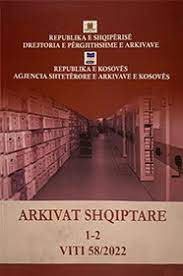
Gjergj Fishta was a Franciscan friar, teacher, writer, translator, playwright, poet, chairman of the Commission for drafting the Albanian alphabet in the Congress of Manastir, member of Albanian delegation to the Paris Peace Conference on 1919, diplomat and envoy in the Balkan Conferences during the years ‘1930, etc. Given the great poetic, cultural and political baggage of Fishta, whose works had been banned by communist dictatorship during 1945-1990 in Albania, this article aims to elaborate the role of archival data as evidence of cultural and historical heritage in relation to the content and management of Gjergj Fishta’s archival fond. By other words, the primary sources (manuscripts) deriving from his diplomatic activities, insights into world literature and literary translation, features of oral and aesthetic literature and aspects of musicology - are just some of many elements of the fond - and these elements will be elaborated from the perspective of their role in Albanian opinion and their impact on Albanian culture and history. A special treatment will be given to the comparison of archive fond management during the communist period and the period after it, as well as the perspective of preserving and making available these materials to the Albanian public.
More...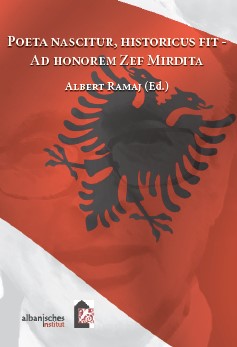
Studiuesi që dha kontributin më të madh në letërsinë gojore shqiptare ishte Anton Çetta. Rëndësia dhe vlera e materialeve të mbledhura e të botuara nga Anton Çetta nuk shprehet vetëm në sasinë e tyre, por, para së gjithash, në cilësinë dhe shumëllojshmërinë e tyre. Ai i mblodhi dhe i publikoi (me botime të veçanta e nëpër revista shkencore) ato krijime që kishin një kuptimësi të qenësishme për botën shqiptare në përgjithësi dhe për botën shpirtërore të shqiptarëve në veçanti.
More...
Libri i parë i gjuhës shqipe që kemi në dispozicion është “Meshari” i Gjon Buzukut. Ekzistenca e këtij libri ishte e njohur gjatë gjithë kohës kur gjuhësia merrej me gjuhën shqipe. Por i vetmi ekzemplar i librit kishte humbur, nuk mund të përdorej në kohën e hershme të albanologjisë shkencore, as edhe në periudhën klasike të kësaj filologjie që karakterizohet me emrat e Lambertzit, të Joklit e të tjerëve.
More...
Letërsia Shqiptare e Kosovës, si çdo letërsi tjetër, është rezultat i traditës, që u zhvillua në determinizime tejet të rënda socio-kulturore e kulturo-historike. Në planin historiko-letrar, me zhvillimin e saj, edhe në kontekst me Biblën Letërsia Shqiptare e Kosovës na del një fenomen i veçantë, që duhet të trajtohet në mënyrë të veçantë.
More...
Martin Camaj wurde am 21. Juli 1925 in Temal geboren, einem Dorf im gebirgigen Hin-terland von Shkodra, in “einer wilden Gegend, ‘von keinem Pferd je betreten’, so steil und schroff ist sie”, wie er selbst es im Vorwort des Buches “Palimpsest” beschrieb. Dort sog der kleine Camaj den ganzen Reichtum oraler Traditionen in sich auf, die später den Grundstein seines literarischen Schaffens bilden sollten.
More...
Adem Istrefi: ”Kumtesë e parashkruar për vitin 2037: Si përshpirtje letrare në njëqindvjetorin e Lindjes së Anton Pashkut - Shkrimtarit më Shkrimtar Ndër Shkrimtarë Shqiptarë”
More...
Një histori e plotë e letërsisë shqiptare nuk mund të hartohet ende për arsyen e thjeshtë që akoma veprat e autorëve të së kaluarës nuk janë të gjitha të botuara, dmth. ka vepra që ngelin akoma dorëshkrim në fonde arkivore ose ne fonde të bibliotekave të ndryshme.
More...
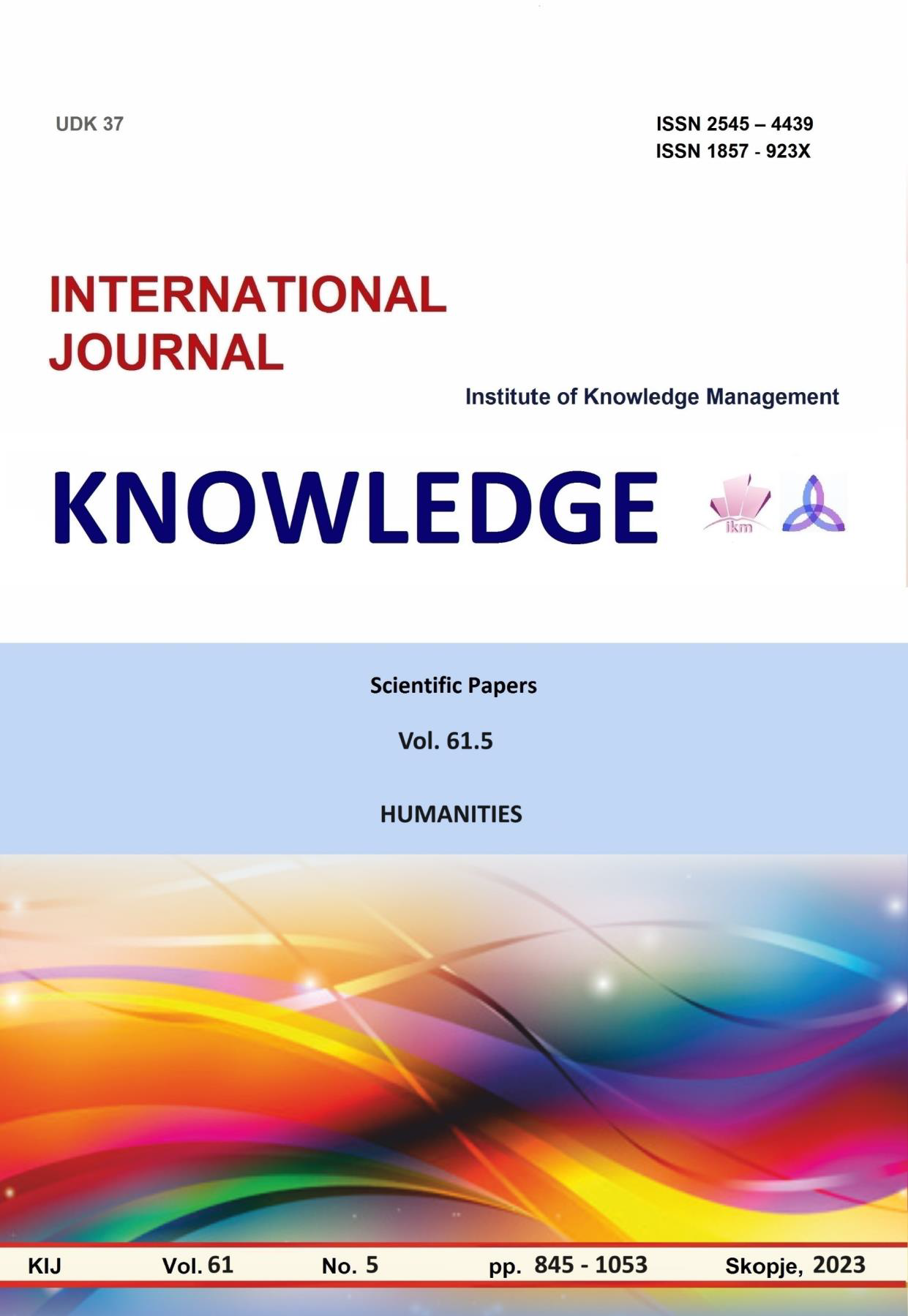
Gjergj Fishta, a prominent figure in Albanian literature, wrote epic, satirical, dramatic, lyrical, and publicistic works during the course of his career. He covered the journalistic side, which assessed aspects of Albania and its environment, in great detail. The majority of Fishta's prose works were released in periodicals and newspapers of the era, including “Hylli i Dritës” (1913) and “Posta e Shqypnis” (1916). The considerable work of Gjergj Fishta is a significant addition to Albanianology, theology, and cultural studies. Our inquiry will center on the newspaper article “The Riots of June 1924.” This writing in the Fishtian pen takes the form of a historical testimony, bringing historical events, facts, and real individuals in addition to its vast lexicon. As he noted, Gjergj Fishta, the demagogues of political and social life were the target of this article. In particular, the authorities, particularly those in Albania, the Assembly, the Parliament, specifically the high officials, starting with the prime minister, witnessed an undress spiritual and national, ignorance to the point of regret, extreme impudence, and nonsense motivated by greed, with serious repercussions for the Albanian world and its people. With this study, Gjergj Fishta aimed to uphold Albanian identity, the call to serve the country, and the need to modify the law to better suit Albanian society. At the end of the day, Gjergj Fishta wanted the best for his people and the preservation of the Albanian identity based on the code of tradition, just like many other patriots, intellectuals, and albanologists.
More...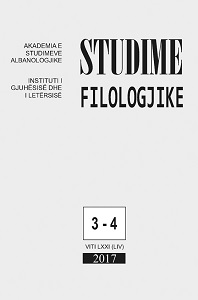
After the Albanian Communist Party came to power, the Beauty, as an aesthetic category, received less attention in front of the new mission which literature held on. The faithful reflection of reality was not enough for the new art. As well as the simple mimetic production was not required. The purpose of the new literature was “the true reproduction of typical characters in typical circumstances,” as F. Engels suggested. This meant that the production of new aesthetics in this case, as E. Dobrenko noticed, comes through the re-adaptation of the Marxist equation to workers "Commodity – Money – Commodity" to "reality-realism socialist-reality". The refutation of the Beauty from the new proletarian art, which had appeared also in the Albanian’s literary horizon, did not come as a result of any rejection of this concept by the postmodernist factor. The negation of the Beauty came due to the involvement of realist socialist literature in the same structure with propaganda and ideology. The first group of Albanian authors of the 1945s-1950s, considered the Beauty as a true and exact reflection of the reality. While for the second group, of the 1960s, the idea of describing reality was converted into the idea of transforming the reality by literature. While the first group had simply created a simulation of reality, as a reflection/imitation of a process, that actually takes place in life, the authors of the second group had created a form of realism that describes imaginary realities, future and expected realities, which produced a simulacrum, as J. Baudrillard named the practice. The simple question is: did realism exist in the socialist realism method? The debate on realism in the Albanian literature after the 1950s, developed between “traditionalists” and so-called “modern” poets. Without any new stylistic researches, the poets of the first group reflected the heroism of the WWII and the experiences of the first stages of the motherland's reconstruction. The poets of 1960-s refused to collect simplified impressions from their metric museum and also the stylistics of the ancestors. They opposed as an “avant-garde demiurge”. Their poetry addresses to the skies more than to the earth. It retains the “messianic inspiration” of the messengers on the new (communist) planet, which speaks about the future to the mass. This generation of poets did not take over the reflection of the daily life. They offered the future of Albania, but still inherent in the future of socialism. The Albanian poetry of 1960s inherits also some of the formal features of Russian futurism and some other points from the Italian Manifesto of Futurism. This is reflected in the launched of city subject, cosmos theme, technological-industrial dreams, metropolitan future and the refutation of any past legacy. In formal terms it seems that some similarities are found between socialist realism and the futurist movement, but, more than decades later on, their compliance are noticed mostly in rhetorical fields. The opposition between “traditionalists” and “modernists” in Albanian literature was not included just in aesthetic categories, but for literary influence and territories too. This war, which began as a struggle between “classical rhyme” and “free verse”, did not ends only on expressional terms. It touched the thematic issues too. One such it among others was the theme of Eros, the love poetry. It began killing the sentimental hero of the years 1945s-1950-s, to replace him with a militant Eros of poetry of the 1960s, which was rarely a lyric one. Despite the differences, the poetry of those years remained a diligent implementator of the utopian project and the poets as “soul engineers”, which directed the reality toward that particular form of realism that did not respond to reality, but to socialism. This process treated the Socialism as an aesthetic category, with the same equivalence as the Beauty itself.
More...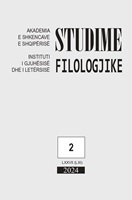
Review of: Pjetër Budi: Vepra II Speculum Confessionis / Pasëqyra e t' Rrëfyemit (1621), Akademia e Shkencave e Shqipërisë, Tiranë, 2024. Riprodhim anastatik i botimit kritik të Gunnar Svane-s (1986), përgatitur dhe pajisur me faksimilet e tekstit burimor nga Bardhyl Demiraj
More...